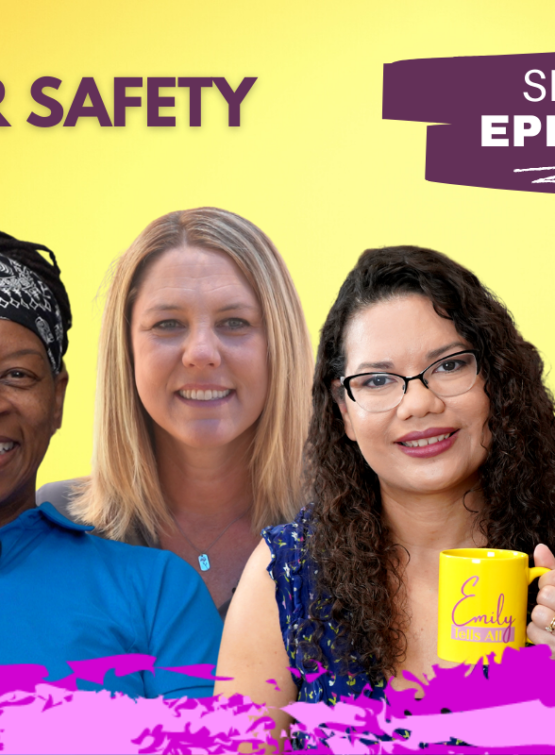AIR DATE JUNE 3, 2021
Title: The Puppy Mill to Consumer Pipeline – How to protect yourself and our furry friends!
This episode of Emily Tells All shares with consumers the dangers of the puppy mill to consumer pipeline. And go in-depth about why it is important to encourage government officials to update laws and policies to protect our furry friends.
Guests and Locations
ASPCA Southeast Region, Senior Director of State Legislation – Jennifer Hobgood
The Humane Society of the United States, Florida State Director – Kate MacFall
Pet Alliance of Greater Orlando, Executive Director – Steve Bardy
Orlando Rabbit Care and Adoptions, Volunteer – Jessica Helmer
Gracie’s of Winter Garden, Owner – Kim Dannenberg
Here is how you can help be part of the solution:
- Sign up for emails from “ASPCA” and “Humane Society of the United States” to receive Call to Action Alerts to join in sending emails to your legislatures to update humane laws
- Don’t buy pets from a Pet Store. Instead adopt from a Shelter or Rescue, or from a “Reputable” Breeder who doesn’t sell to Pet Stores
How to Step Outside the Puppy-to-Consumer Pipeline
Pet stores play an essential role in the lives of our animal companions. It’s often where we all get the supplies needed to take care of the dogs or other pets in our lives.
The problem with a pet store is that animals are treated as commodities in the same way a bag of dog food is handled.
Since the 1980s, the Humane Society of the United States has fought to shut down puppy mills. Read along to find out how to avoid them yourself and do your part to support happier and healthier animals.
What Are the Best Ways to Avoid Puppy Mills?
1. Avoid Pet Stores
“Most of the dogs that you see in a pet store… will come from something known as puppy mills,” says Jennifer Hobgood, Senior Director of State Legislation for ASPCA. She describes them as commercial breeding facilities that make money by producing as many puppies as possible.
Most dogs spend their lives in warehouse-style kennels, sometimes stacked from the floor to the ceiling. “[It’s] six inches larger than your body for your whole life if you’re a breeding dog in a puppy mill,” says Kate MacFall from the Humane Society. “These stacked cages, some puppy mills have a few hundred. There are several that have 1,000. Can you imagine?”
2. Visit the Breeder
If you’re interested in getting a puppy, it is essential to visit the breeder. You’ll want to see the entire facility, including where the dogs are kept and bred.
Most puppy mills supply pet stores with false information. That often leaves the dog sick, requiring extensive vet bills that cost thousands of dollars. You cannot rely on the paperwork as a guarantee that you’re getting a healthy animal.
Some people have success stories with pet store puppies, but it doesn’t take long to find that more families and adopters have dealt with extensive health issues. If you want a specific breed or animal, consider working with shelters and rescues that work with them.
3. Avoid Impulse Purchases
“I had just had a miscarriage and went to the pet store to fill in that hole because I thought I would never be able to have any more kids,” I told Hobgood. The process was an “emotional impulse purchase.”
4. Tour a Rescue
When you want to avoid a puppy mill, the adoption process should be an extended one. That’s when a rescue is often a better option for families.
“Rescues tend to be breed-specific, and they tend to hold the animals a little bit longer,” says Steve Bardy, Executive Director of Pet Alliance of Greater Orlando. The organization has served its community since 1937. All 7,000 animals that come through here see a veterinarian. Then we have a public clinic that people can schedule appointments for their annual vaccines, heartworm tests, any kind, if they’re having minor issues.”
Most young animals get adopted within 36 hours, but rescue organizations also take the time to find that “special adopter” who can spend more time with animals with complex medical needs.
“We see $2,000, $2,500, $2,800, $3,000 has been paid for a dog, and then 30 days later they surrendered it,” says Bardy. “You have to put a lot of work into a puppy.”
What Is the Safest Solution?
When you’re ready to adopt a puppy or dog, visiting a local rescue or animal shelter is the safest solution. These facilities have the animal’s best interest at heart, with many of them offering last chance adoptions.
Before selecting a companion, please remember to adopt based on compatibility and your energy level.
By taking those steps and being proactive with your research, you can step outside the puppy-to-consumer pipeline and defund the mills.



